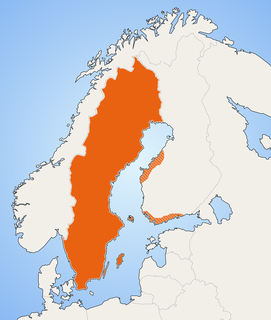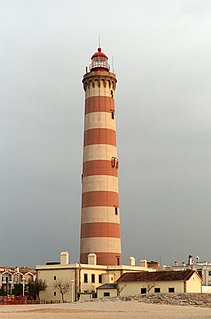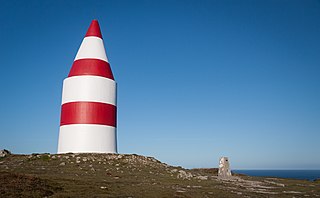
Pori is a city and municipality on the west coast of Finland. The city is located some 10 kilometres (6 mi) from the Gulf of Bothnia, on the estuary of the Kokemäenjoki river. Pori was established in 1558 by Duke John, who later became John III of Sweden.

Satakunta is a region of Finland, part of the former Western Finland Province. It borders the regions of Southwest Finland (Varsinais-Suomi), Pirkanmaa, South Ostrobothnia and Ostrobothnia. The capital city of the region is Pori. The name of the region literally means Hundred. The historical province of the same name was a larger area within Finland, covering modern Satakunta as well as much of Pirkanmaa.

Merikarvia is a municipality of Finland.
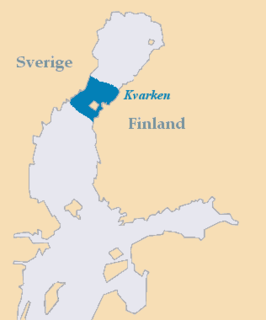
Kvarken is the narrow region in the Gulf of Bothnia separating the Bothnian Bay from the Bothnian Sea. The distance from Swedish mainland to Finnish mainland is around 80 km (50 mi) while the distance between the outmost islands is only 25 km (16 mi). The water depth in the Kvarken region is only around 25 metres (82 ft). The region also has an unusual rate of land rising at about 10 mm a year.

Märket is a small 3.3-hectare (8.2-acre) uninhabited skerry in the Baltic Sea between Sweden and Finland, with a lighthouse as its salient manmade feature. Märket has been divided between the two countries since the Treaty of Fredrikshamn of 1809 defined the border between Sweden and the Russian Empire as going through the middle of the island. The Finnish side of the island is part of the Municipality of Hammarland and is the westernmost land point of Finland. The Swedish part of the island is itself divided by two counties of Sweden: Uppsala County and Stockholm County.

The Cape Lookout Lighthouse is a 163-foot high lighthouse located on the Southern Outer Banks of North Carolina. It flashes every 15 seconds and is visible at least 12 miles out to sea and up to 19 miles. The Cape Lookout Light is one of the very few lighthouses that operate during the day. It became fully automated in 1950. The Cape Lookout Lighthouse is the only such structure in the United States to bear the checkered daymark, intended not only for differentiation between similar light towers, but also to show direction. The center of the black diamonds points in a north-south direction, while the center of the white diamonds points east-west.

The Bothnian Bay or Bay of Bothnia is the northernmost part of the Gulf of Bothnia, which is in turn the northern part of the Baltic Sea. The land holding the bay is still rising after the weight of ice-age glaciers has been removed, and within 2,000 years the bay will be a large freshwater lake. The bay today is fed by several large rivers, and is relatively unaffected by tides, so has low salinity. It freezes each year for up to six months. Compared to other parts of the Baltic it has little plant or animal life.

Harmaja is an island and a lighthouse outside Helsinki, south of the Suomenlinna sea fortress. The island has been functioning as a landmark since the 16th century. A landmark structure was built on the island in the 18th century and a light house in 1883. The first lighthouse was only 7.3 m high and it soon proved to be too low. In 1900 the height was doubled by creating a rectangular brick building on a granite base. A large foghorn alerted ships in fog and in bad visibility. Harmaja received the world's first directed and undirected radio beacon in 1936. The lighthouse is fully automated today.

Marjaniemi Lighthouse is a lighthouse located in the village of Marjaniemi at the westernmost point of Hailuoto island on the Gulf of Bothnia. The lighthouse is located approximately 50 kilometres (31 mi) west of Oulu. The lighthouse was designed by Axel Hampus Dalström as his fourth lighthouse and it was first lit in 1872.
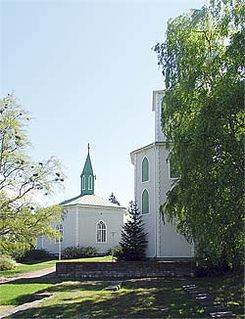
Reposaari is an island and village at the Bothnian Sea in Pori, Finland.

The Oura Archipelago is a group of islands near the city of Pori in Finland. It is a part of the municipality of Merikarvia. The archipelago consists of approximately 300 islands. It is part of the Bothnian Sea National Park, that was established in 2011. The main island Ouranluoto has several tourist services. It can be reached by the harbour of Krookka.

The Point of Ayre Lighthouse is an active 19th century lighthouse, sited at the Point of Ayre at the north-eastern end of the Isle of Man. It was designed and built by Robert Stevenson, grandfather of prolific writer and novelist Robert Louis Stevenson, and was first lit in 1818, making it the oldest operational lighthouse on the island.
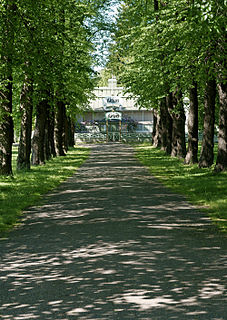
Kirjurinluoto is an island and a park in the delta of Kokemäenjoki river in the city of Pori in Finland. It is best known for the Kirjurinluoto Arena, an open-air concert park which hosts the annual Pori Jazz festival.
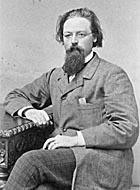
Axel Hampus Dalström, born 22 March 1829, died 19 March 1882, was a Finnish architect. He was the director of the National Board of Public Building from 1869 to 1882. Dalström is best known for the Old Student House in Helsinki as well as for seven lighthouses he designed in the 1870s.

Säppi is an island on the coast of Bothnian Sea in the municipality of Eurajoki in Finland. The island is located some 20 kilometres west of the city of Pori and 6.5 kilometres off the mainland.
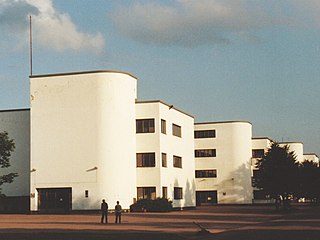
Niinisalo is a village in the municipality of Kankaanpää in the region of Satakunta in Finland. It is known of the Niinisalo Garrison which is the base of Finnish Army unit Artillery Brigade. Population of Niinisalo is 996 (2009).

The Glosholm lighthouse was a lighthouse on a southern tip of the Glosholm Island in the Pellinge archipelago in the Gulf of Finland, outside of Porvoo. With increasing sea traffic in the area, the lighthouse was constructed during the years 1832–1835. It served from 1835 to 1863, when it was replaced by the Söderskär lighthouse. The structure served as a daymark until 1940, when it was blown up.
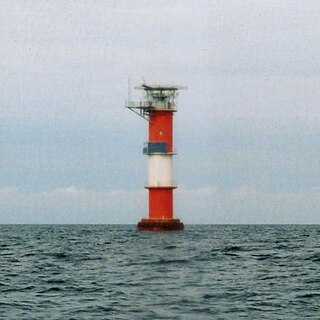
The Kalbådagrund lighthouse is a lighthouse located on a dangerous shoal near the centerline of the Gulf of Finland about 12 km (7.5 mi) from shore and about 25 km (15 mi) south of Porvoo and was Finland's first caisson lighthouse.


